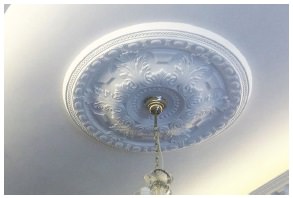Chapter: 11th Chemistry : UNIT 5 : Alkali and Alkaline Earth Metals
Calcium Sulphate (Plaster of Paris): Preparation, Properties, Uses
Plaster of paris
Calcium Sulphate (Plaster of Paris), CaSO4·½ H2O
It is a hemihydrate of calcium sulphate. It is obtained when gypsum, CaSO4·2H2O, is heated to 393 K.
2CaSO4 .2H2O(s) →2CaSO4 .H2O+ 3H2O
Above 393 K, no water of crystallisation is left and anhydrous calcium sulphate, CaSO4 is formed. This is known as ‘dead burnt plaster’.
It has a remarkable property of setting with water. On mixing with an adequate quantity of water it forms a plastic mass that gets into a hard solid in 5 to 15 minutes.
Uses:
The largest use of Plaster of Paris is in the building industry as well as plasters. It is used for immobilising the affected part of organ where there is a bone fracture or sprain. It is also employed in dentistry, in ornamental work and for making casts of statues and busts.

Related Topics